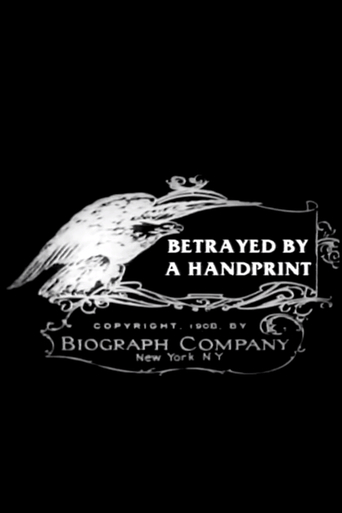MartinHafer
As I watched "Betrayed by a Handprint", two overwhelming problems were obvious with the film. First, and most importantly, I had no idea what was occurring in the movie...none whatsoever. If you read the IMDb summary, then it does make sense--but folks back in 1908 did not have that and really must have been baffled. Some intertitle cards (which were to soon become popular) would have solved this problem, but the film had none to explain the action. Second, the acting is just awful--with LOTS of overly exaggerated actions. The direction was a problem because the man in charge (D.W. Griffith) SHOULD have told them to stop over-emoting and making such ludicrous arm gestures. All in all, an amazingly bad film from a supposed master craftsman.
boblipton
Florence Lawrence is Kate Bruce's house guest. After a losing evening at cards, Florence breaks into her host's jewel box and steals a pearl necklace. Kate finds out who did it, confronts her and orders Miss Lawrence out of her house, but later forgives her and writes a check for the poor young thing. It's not like Miss Lawrence is a housemaid who has taken leftover food, after all.D.W. Griffith already has the basics of his screen techniques down. There are no title cards, yet the story proceeds apace. There are a variety of shots, including one extreme close-up and cameramen Billy Bitzer and Arthur Marvin have established the Biograph Right Wall.What Griffith has not yet done is gotten his actresses to tone it down. Miss Lawrence's joy at getting the pearls is little short of St. Vitus' Dance, and when Miss Bruce orders her out of the house with a "Go and darken my door no more" gesture, she does it with such vigor I was worried she would throw her back out. That style of acting was something he would tackle over the following year.
Michael_Elliott
Betrayed By a Handprint (1908) ** 1/2 (out of 4) A young woman loses a hand of cards and decides to get even by robbing the house. High moral drama from D.W. Griffith works in large part to the performance of Myrtle Vane who was considered the first female "movie star". She later committed suicide in 1936 so…..Father Gets in the Game (1908) ** (out of 4) D.W. Griffith film about an elderly father who grows tired of seeing his son bring home beautiful women so he gets a makeover and heads out on the prowl. The story seems like it would make for some good laughs but there aren't really any to be found here.
rudy-46
This is a real gem in that it is an early effort made by the "Father of Film", D.W. Griffith and featuring the first movie star, Florence Lawrence. Naturally it would appear very antiquated to modern audiences but it is of great historical value. Griffith was beginning to master the narrative and hone his filmmaking skills. Miss Lawrence was wonderful in the lead portraying Myrtle Vane, a society lady who turns thief after losing at cards, but is caught when she leaves a palm print at the scene of the crime. She had a strong screen presence and mastery of histrionics, it is no wonder she was dubbed the "Biograph Girl", drawing people into the theaters with her magnetism. This was at a time when actors were not being billed, lest they demand more money, and Miss Lawrence would eventually be one of the first actresses to be credited in films, creating the star system.


